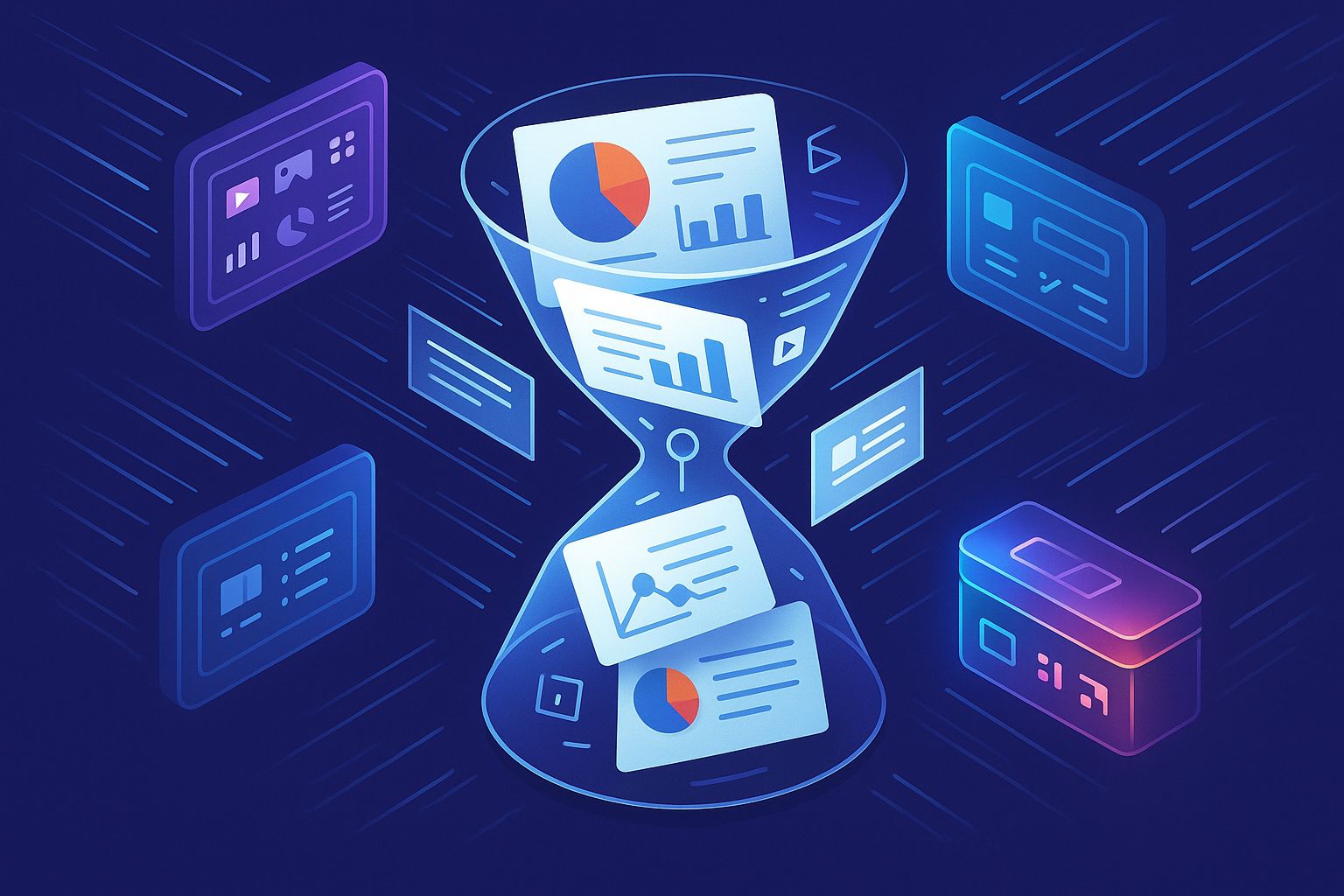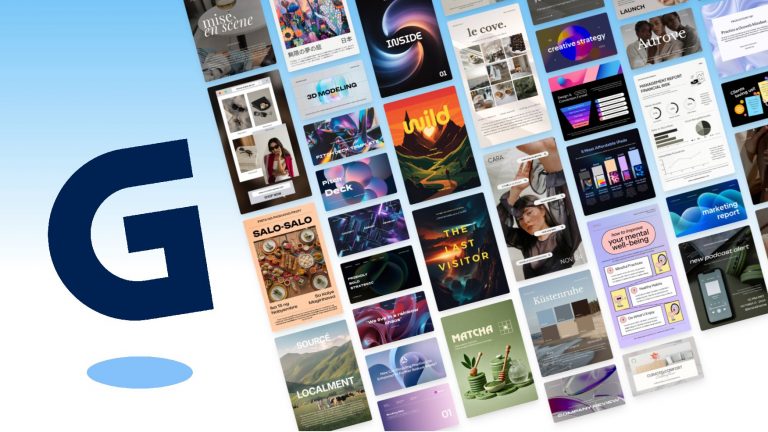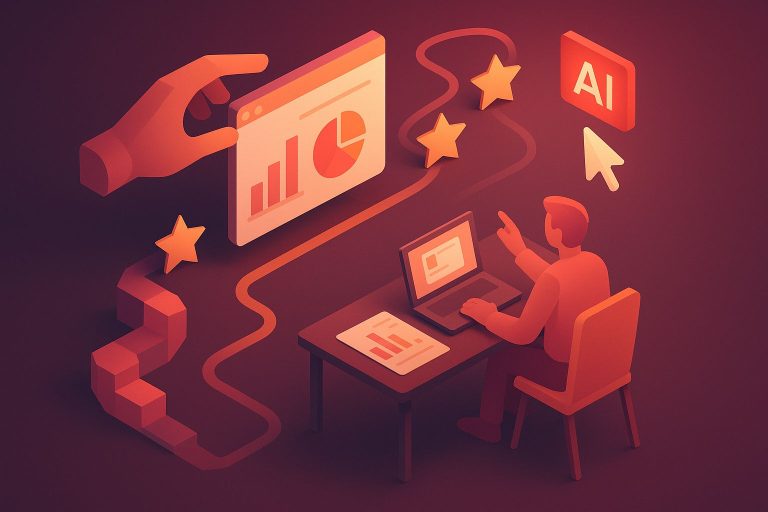How Generative AI Is Redefining Slide Design Workflows in 2025
Generative AI is revolutionizing slide design workflows for corporate strategists by 2025, automating creation, enhancing content, and streamlining communication. Learn about design automation, intelligent content generation, and new AI tools transforming presentations.
How Generative AI Is Redefining Slide Design Workflows in 2025
The era of spending countless hours meticulously crafting presentation slides is over. Generative AI has emerged as a transformative force, automating tedious design tasks and empowering corporate strategists to focus on what truly matters: the narrative and the impact of their message. In 2025, the integration of artificial intelligence into presentation software is not just a trend; it’s a fundamental shift in how we communicate visually in the corporate world.
For corporate strategists, the pressure to deliver compelling, data-driven presentations is immense. These presentations are often the bedrock of critical decisions, from securing investments to aligning internal teams on a new strategic direction. The challenge has always been to balance the substance of the content with a design that is both professional and engaging. According to one survey, professionals can spend an average of 6-8 hours creating a single 10-slide presentation. Generative AI is drastically reducing this time, freeing up valuable hours for strategic thinking and refinement.
The Automation of Design: From Blank Canvas to First Draft in Seconds
One of the most significant impacts of generative AI on slide design is the automation of the initial creation process. Instead of starting with a blank slide, strategists can now input a simple prompt, a block of text, or even a full document, and an AI-powered tool will generate a complete presentation draft in moments. These tools leverage sophisticated algorithms to suggest layouts, color palettes, and fonts that align with the content and brand guidelines.
AI presentation makers are designed to go from an idea to a fully-formed slide deck with just a few clicks. This initial draft serves as a solid foundation, allowing presenters to bypass the often-dreaded “blank canvas” stage and move directly to refining the narrative and customizing the visuals. This hyperautomation of repetitive design tasks is leading to a significant increase in efficiency, with some reports indicating that teams are creating presentations in a fraction of the time it used to take.
Intelligent Content Generation and Refinement
Beyond just design, generative AI is also revolutionizing the content of the slides themselves. These tools can:
- Generate text from a prompt: Users can provide a topic or a key idea, and the AI will generate relevant headlines, bullet points, and even speaker notes.
- Summarize long documents: AI can take a lengthy report or article and distill the key takeaways into a concise presentation format.
- Rewrite and refine content: Many AI tools offer features to rephrase text, adjust the tone of voice, or shorten content for greater impact.
- Create data visualizations: Instead of manually creating charts and graphs, users can input their data and have the AI generate clear and dynamic visualizations.
This ability to generate and refine content not only saves time but also helps to ensure that the message is clear, concise, and impactful. For corporate strategists, this means being able to quickly iterate on their narrative and tailor it to different audiences.
Emerging Trends in AI-Powered Slide Design for 2025
As generative AI technology continues to mature, several key trends are emerging that are further redefining slide design workflows:
- Contextual AI: Moving beyond generic templates, contextual AI incorporates specific information about a company’s industry, brand voice, and target audience to generate highly relevant and personalized presentations.
- AI Realism: The use of AI-generated images, videos, and avatars that are nearly indistinguishable from real-life visuals is on the rise. This allows for more immersive and emotionally resonant storytelling without the need for expensive photoshoots or video production.
- Minimalist Maximism: This design trend balances clean, simple layouts with bold, attention-grabbing details. AI tools make it easier to achieve this balance, creating presentations that are both professional and visually striking.
- Interactive and Dynamic Content: The future of presentations lies in their ability to engage the audience. AI is enabling the creation of more interactive elements, such as dynamic charts that update in real-time and presentations that can adapt based on audience feedback.
A New Breed of Presentation Tools
The market is now populated with a variety of AI presentation makers, each with its own strengths. Some popular options in 2025 include:
- Gamma: Known for creating clean, modern presentations and interactive, web-based decks.
- Beautiful.ai: Focuses on automating design to ensure professional-looking slides without requiring design expertise.
- Plus AI: Integrates directly with Google Slides and PowerPoint, allowing users to generate and edit presentations within their existing workflows.
- Microsoft Copilot for PowerPoint: A robust solution integrated into the Microsoft 365 ecosystem.
- Slidesgo: Offers a wide variety of AI-enhanced templates, making it a good choice for those who want a starting point for their design.
While these tools offer powerful capabilities, it’s important to remember that they are best used as assistants, not replacements for human creativity and strategic thinking. The most effective presentations will still be those that combine the efficiency of AI with the unique insights and narrative skills of the presenter.
The Strategic Advantage for Corporate Strategists
For corporate strategists, the adoption of generative AI in slide design workflows offers a significant competitive advantage. By automating the more tedious aspects of presentation creation, they can:
- Increase Productivity: Free up valuable time to focus on high-level strategy and message refinement.
- Enhance Communication: Create more visually compelling and engaging presentations that resonate with stakeholders.
- Improve Consistency: Ensure that all presentations adhere to brand guidelines, maintaining a professional and cohesive image.
- Accelerate Decision-Making: Quickly generate data-driven presentations that provide clear insights and support faster, more informed decisions.
In conclusion, generative AI is not just changing the aesthetics of our slides; it’s fundamentally altering the way we approach visual communication in the corporate world. For the forward-thinking corporate strategist, embracing these new tools and workflows will be key to staying ahead of the curve and delivering impactful presentations in 2025 and beyond.







